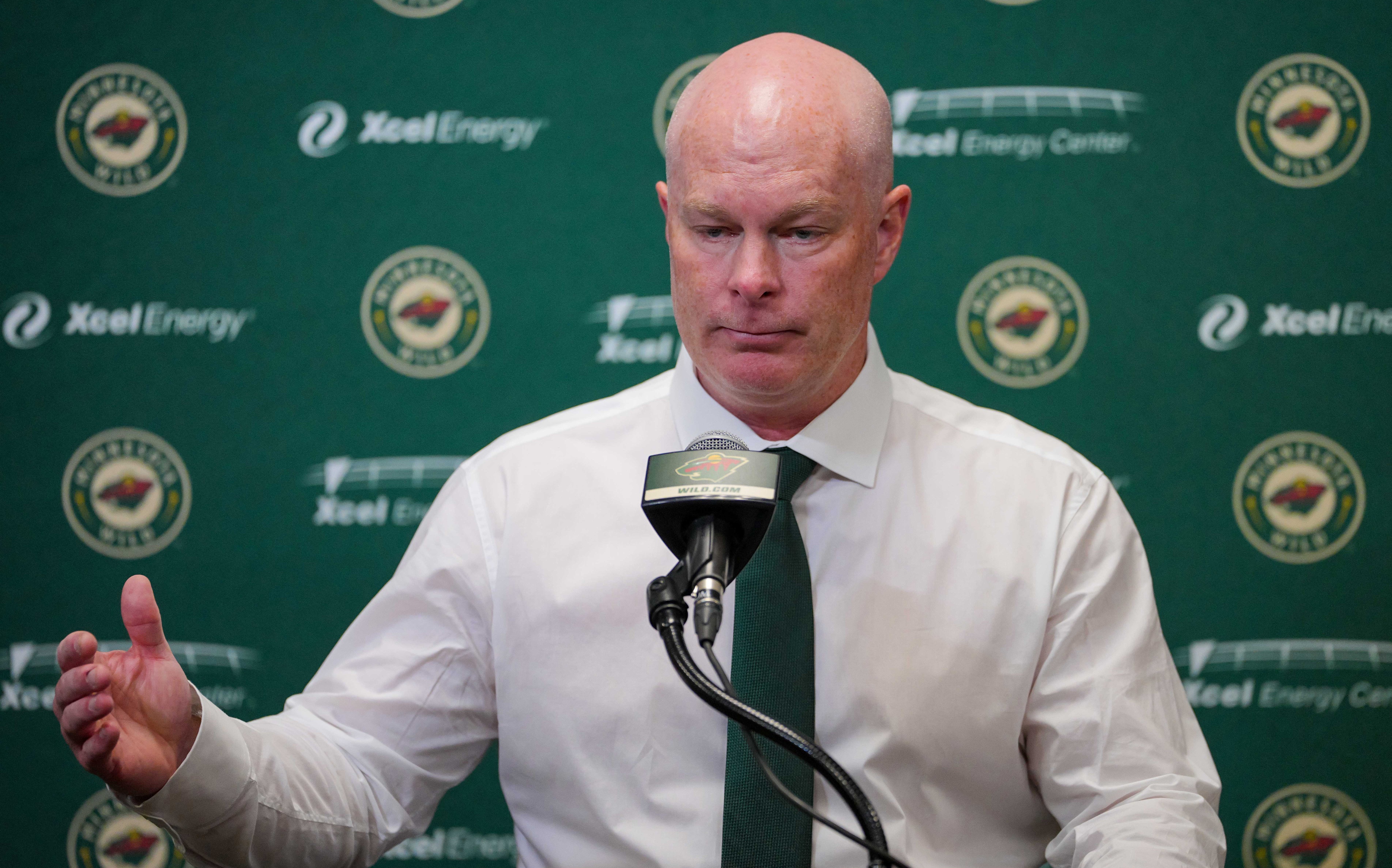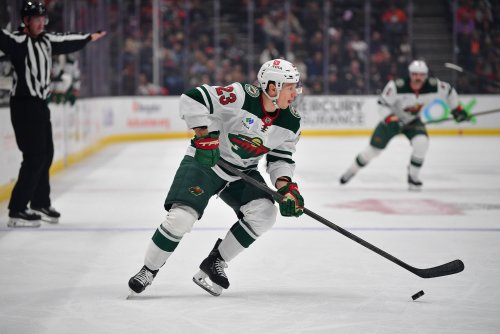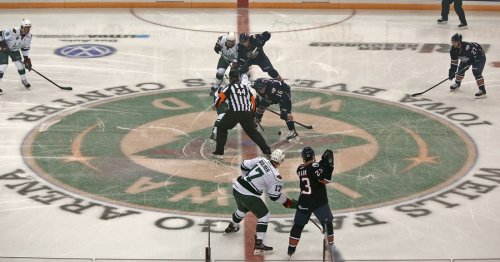
When an NHL team fires its head coach, the company line is that the team just needed a fresh voice in the locker room. But what does that mean? Is it just a buzzword? Perhaps it just conveniently threads the needle between the less-believable, The last guy was so bad he should never coach again, and don’t worry -- the roster we built is fine!
But in John Hynes’ case, it’s becoming clear what his fresh voice brings. In an excellent Athletic article, the players from Hynes’ previous coaching stops describe him as a detail-oriented coach who gets the best out of his skaters. New Jersey Devils goaltender Cory Schneider put it best: “He’ll tell you exactly what he expects out of you and what he needs out of you. He doesn’t mince words. There’s no gray area of ‘just make a play or make a read.’ It’s like, ‘I want you here, I want you here.’
He’s capable of identifying minor adjustments that unlock massive on-ice improvements. By meeting his players on an individual level, he communicates these adjustments effectively and develops a close personal bond with his players.
That certainly squares with what Hockey Wilderness’s Justin Wiggins identified about Hynes’s new-look penalty kill. Hynes made two simple adjustments to the PK forwards. He wants them to be less aggressive in the neutral zone and drop deeper in the defensive zone. That allows them to support the defense off the rush better and prevent mistakes in their own zone. By changing just two small details, Hynes has the same personnel killing penalties at a 93% clip (13/14) during his tenure.
Former Minnesota Wild player Wes Walz joined Michael Russo on his latest podcast to identify some of Hynes’s early tactical changes. Walz noted that Minnesota’s breakout is more compact. They support the puck carrier with multiple close passing options rather than spreading out across the whole ice sheet. The point of this is to relieve pressure on the puck carrier.
Jake Middleton echoed these sentiments. “We’re really playing tight as a five-man unit,” he explained. “Early on in the year, we might’ve got spread out not being cohesive together … There’s a ton of clarity on what your options are and where you want the puck to go.”
Note how this pays off on Marco Rossi’s goal against the Chicago Blackhawks:
Kirill Kaprizov makes a great play to overturn a loose puck, and he has Mats Zuccarello available as a quick outlet. His target is no farther than center ice so that Kaprizov can make the pass instantly. Zuccarello is under immediate pressure but immediately hands the puck off to Rossi. The Wild don’t out-skate or outnumber Chicago, and the play requires very little space. And yet, it’s essentially indefensible.
Compare that close support to Rossi’s goal from October in Washington:
Calen Addison makes a hard cross-ice pass to Marcus Johansson, switching the puck from the right side of the ice to the left. Johansson carries the puck and swaps places with Rossi at center ice. Then Johansson rifles the puck to Marcus Foligno on the right wing, and the puck changes sides from left to right. Foligno shoots the puck to a streaking Rossi up the left wing (another change of sides), and Rossi walks in alone.
Each of these passes takes a great deal of skill to catch cleanly. This play is awesome, but the degree of difficulty is much higher. “Our breaking out is a lot better than it has been,” as Foligno put it, “Guys are snapping the puck around tape to tape. It’s a lot easier when you play like that.” Hynes has made things easier on his offense by emphasizing support for the puck carrier. That also means fewer turnovers, which is easier on the defensemen.
Along with this change in breakout philosophy, Walz called out a change in personnel deployment. Specifically, Hynes tends to pair his best forwards and his best defensemen.
Evason typically avoided this philosophy because he liked to match his best defensemen against his opponents’ best forwards. He also preferred to attack the other team’s worst defenseman with Minnesota’s best forwards.
Those matchups make a lot of sense if the game is more spread out because that style of play puts the defensemen on an island. However, that often led Evason to pair his top forward line with the bottom defense pair on offensive zone faceoffs.
While this nicely shelters the bottom pair from challenging assignments, it puts a lot of pressure on the scoring lines. Third-pairing defenders typically have less skill, which means they’re less effective when the forwards pass the puck to the point.
Hynes deploys Kaprizov’s line or Matt Boldy alongside Jared Spurgeon or Jonas Brodin. These players can carry or pass the puck much better than the third pair. That skill maximizes offensive zone time for the team’s best players.
Both philosophies have merit, but Hynes’s is more traditional. He’s going to ask his bottom-six forwards and third-pair defensemen to hold up defensively. For the grinders at the bottom of the roster, this is their forte. They chase loose pucks, dump them into the offensive zone, and forecheck.
Evason asked his bottom-pair defensemen to support the top line. Hynes is willing to throw the bottom end of his roster into the deep end. The idea is for Minnesota’s best players to outweigh the trouble the bottom of the roster gets into.
So far, the tradeoff has favored Minnesota. The team has earned a plus-13 goal differential in Hynes’s first four games.
Hynes has also re-energized the power play, contributing to that goal differential. Minnesota’s new-look man-advantage unit plays a more structured and connected style, which features the “bumper” player.

Image Credit: https://thehockeywriters.com/red-wings-power-play-2022/
You can see the effect of this change during Boldy’s redirection in Calgary:
Zuccarello carries the puck down the left wing. As a left-handed shot, he can threaten to pass to all four of his teammates and shoot. Joel Eriksson Ek parks himself in the slot -- this is the bumper position. Eriksson Ek’s presence in the slot forces attention from the weak-side defenseman and the weak-side forward. That’s why Spurgeon, Kaprizov, and Boldy come open for a couple of seconds.
Compare that structure to Kaprizov’s power-play goal on November 2nd, on Evason’s power play:
Boldy briefly sets up as a bumper option but drifts too deep toward the net. He then sets up a screen with Eriksson Ek and the Devils’ John Marino and Jesper Bratt. The system appears less rigid, allowing Boldy to abandon the bumper spot. On the other hand, Kaprizov’s passing options are far less predictable.
The screen is impossible for goaltender Vitek Vanecek to handle, but the chances are high that one of these four players blocks the shot. This play puts a lot of pressure on Kaprizov to make the perfect shot, whereas Hynes’s scheme makes things easier on the players.
Note that before Boldy’s goal above, all four of Zuccarello, Eriksson Ek, Boldy, and Kaprizov are dangerous shooting options. It’s another example of providing the puck carrier with close and quick passing.
So what happens when the penalty killer covers the point player, eliminating that easy pressure release? Let Brock Faber show you:
Because the near-side forward steps out to cover Faber, it forces the weak-side defender to respect Johansson’s one-timer. That opens up a three-on-two on the strong side below the faceoff dots. Since the bumper player (Rossi) stays in the open space in the slot, that’s too much ice for Chicago’s defensemen to cover. This will be one of the easiest goals Rossi scores all season.
So far, the early results of Hynes’s tenure are very encouraging. Even more encouraging is that he’s quickly implemented highly effective systems changes. After all, the best coaches are great teachers.
The Wild have a tough schedule for the rest of December. They play four games in three days, then six games in ten days. The teams they play over those stretches are far better than the teams they played in Hynes’s 4-0 start. Moreover, those teams now have tape on all of the Wild’s system changes.
Hynes has a history of hot starts that flame out. If he wants to buck that trend in Minnesota, he must react to the counter-punches his colleagues across the league throw at him.
Think you could write a story like this? Hockey Wilderness wants you to develop your voice, find an audience, and we'll pay you to do it. Just fill out this form.
-
 1
1








Recommended Comments
Join the conversation
You can post now and register later. If you have an account, sign in now to post with your account.
Note: Your post will require moderator approval before it will be visible.